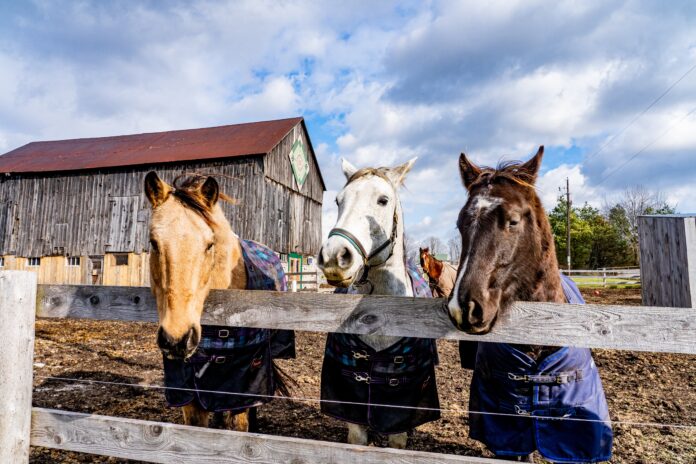If you are like most horse owners, then you want to spend as much time as possible with your beloved equine friends. However, it can be difficult to keep them happy and healthy when they are cooped up in a stall all day. That’s why you must provide your horse with plenty of space in the pasture secured with the right horse fencing, and plenty of room inside their paddock shelter so that they can move around freely without feeling cramped or anxious. However, it’s not easy to choose the right horse paddock shelters. But following these tips will help you make the best decision for your horses and your farm.
One of the most important aspects of horse ownership is access to shelter
One of the most important aspects of horse ownership is access to shelter, particularly when you are keeping them in a paddock. The weather can change quickly and your horses need protection from the elements at all times.
Shelters should be made from durable materials that can withstand any kind of weather, including rain or snow storms as well as scorching heat during summer months. They should also have enough shade for your horse to cool down on hot days and warm up when it gets cold outside.
Your horse needs protection from the elements.
The first thing to consider when choosing a horse shelter is the climate of your area. If you live in an area that gets lots of rain, snow, and wind, then you will need a sturdy structure with sturdier materials that can hold up to these elements.
On the other hand, if your climate is dryer or hotter than average (like Arizona), then you might want something lighter and less expensive so it doesn’t add too much weight on top of what already exists in terms of heat absorption in your paddock area.
A horse paddock shelter should be durable enough to withstand any kind of weather. The shelter should be able to protect the horses from rain, snow, and wind. You don’t want your horses exposed to harsh conditions when they are sleeping or resting so you must choose a shelter that can hold up against these elements.
There must be plenty of room inside the shelter for your horse to move around and stretch out.
There must be plenty of room inside the shelter for your horse to move around and stretch out if they need to. The ideal size would be at least 10′ x 10′, but it’s better if you have more space than this. You should also consider adding an extra 5′ on either side of your paddock, as this will allow room for a hay feeder, water trough, and tack storage area.
Your horse will also benefit from having enough shade in the paddock so that it can cool down on hot days and warm up when it gets cold outside. If you live in a region where temperatures get very high or drop below freezing during winter, it’s important to make sure that your shelter protects your horse from these extremes.
In addition, the roof on your shelter mustn’t leak during rainstorms or snowfall.
In addition, the roof on your shelter mustn’t leak during rainstorms or snowfall to create a suitable environment. To ensure this, you should look for a shelter with strong material for its roof and walls. A good example of such material is steel sheeting because it’s durable and can withstand heavy winds, but there are many other options available as well. It’s also best to have slanted roofs on your horse paddocks so that rain will run off into gutters instead of pooling on top of them and causing leaks inside the structure itself. Finally, if possible, try getting one with drip edges around all four sides (or at least three out of four) so that any excess water won’t end up dripping down onto anyone standing underneath them either!
The paddock shelters should have high enough walls so that the horses cannot escape if they are in a playful mood. The height of the wall should be at least 6 feet and it should be constructed of a material that is sturdy and not easily damaged by horses, such as wood or concrete blocks.
Conclusion
Choosing the right horse pasture shelter can be a tricky task. There are many factors you need to consider when selecting one, such as size, materials, and price. If you choose an incorrect shelter for your horse’s needs, it could end up being a waste of money or even dangerous for your animals. The first thing you should do before making any purchases is taken some time to learn about the various types of horse paddock shelters available on the market today. Once you have an idea of what type would work best for your situation, then it’s time to start shopping around until you find one that meets all of your requirements.











